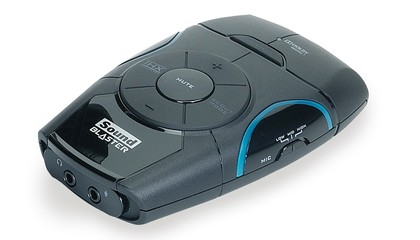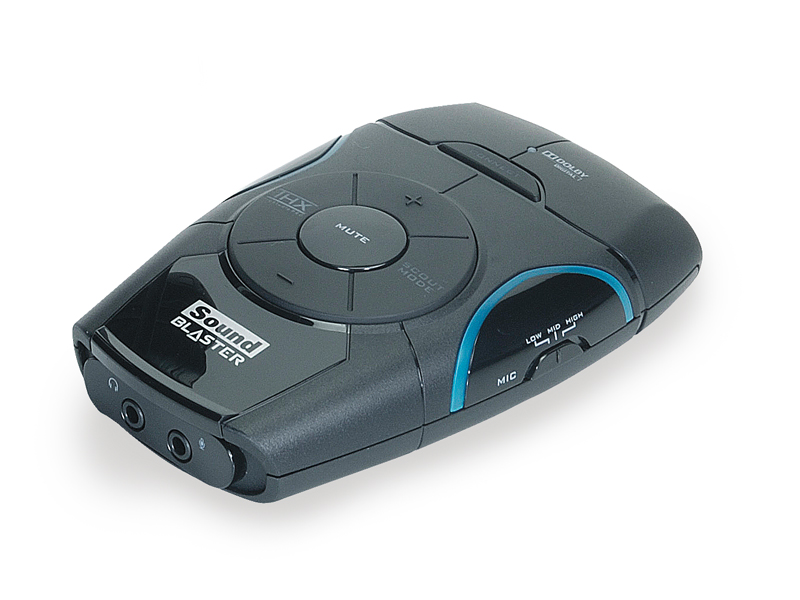TechRadar Verdict
Pros
- +
Great surround effect
- +
Scout Mode has hardcore gamer appeal
- +
Bundled with Tactic3D Omega headset
- +
Cross-platform compatibility
Cons
- -
Expensive on its own
- -
relies on good speakers/headset
- -
Scout Mode is hit and miss
Why you can trust TechRadar
A dedicated sound card in the current PC hardware landscape needs to be capable of all kinds of stunts to justify its existence.
Does Creative's Sound Blaster Recon3D, its new £90 external sound card, have a deep enough bag of tricks to succeed?
It's the world's first quad-core sound processor, which gives it the power to pull off impressive feats such as separate mic audio and in-game sound steams, and apply separate effects – including compression, surround and noise cancelling – to each stream.
It's best friends with THX TruStudio, works with PC, Mac, PlayStation 3 and Xbox 360, and sports a 'Scout Mode' button, which amplifies sound cues in-game to highlight nearby enemies.
There was a time when Creative and other PC audio peripheral specialists made most of their dough from internal sound card sales, but advances in onboard sound chips quickly pushed aside internal PCI cards such as Creative's classic Audigy 2 ZS (a veritable metropolis of capacitors) to the realms of fringe peripherals.
Built-in motherboard HD audio chips such as those from VIA and Realtek, plus Creative's X-Fi range, have swallowed the gap in audio fidelity and processing performance that used to exist between PCI sound cards and onboard sound to the point that few would consider shelling out extra cash on sound hardware over other performance-enhancing components.
As the Southbridge chips on both Intel and AMD chipsets and CPUs themselves become more powerful, we get much less of a performance hit, since the silicon is crunching the numbers faster and more efficiently to decode digital audio to analogue so that your speakers can made sense of it.
Sign up for breaking news, reviews, opinion, top tech deals, and more.
This decoding used to eat up frames per second, but modern CPUs and Southbridge chips aren't troubled by integrated X-Fi 7.1 audio.
So the gap between integrated audio and kit such as Creative's Recon3D needs to be noticeable, useful and sizeable for the latter to appeal. Let's see how it performs.

The real breakthrough tech here is SoundCore 3D, the world's first quad-core dedicated sound processor.
You can expect to see this chip feature on high-end motherboards as an integrated sound solution as well as powering the Recon3D.
Four cores are advantageous because they can handle simultaneous digital signals and crunch away at them with HD audio codecs much more quickly and efficiently than a single processor – just like AMD and Intel's multi-core, multi-threaded CPUs with video encoding.
Long story short, you don't need to fret about losing frames per second to voice and sound processing. The Recon3D's got that covered. It probably has that covered without breaking a sweat in fact, which is why Creative has thrown a generous heap of functionality at it.
As we mentioned, the Recon3D is full to the slick black brim with Dolby THX TruStudio Pro features. The most useful for gamers will be Pro Surround and Pro Dialog Plus.
The former creates a 360-degree soundscape, with sounds panning horizontally and vertically around you. Rather than cram its headsets full of drivers, Creative has opted for the digital approach, interpolating sounds as they travel from one point to another. In practice, this is one of the Recon3D's most effective and enjoyable features.
It genuinely tricks your ears into hearing sounds way behind or above you and from some distance away. The intensity of this effect can be tweaked in the software layer.
Pro Dialog Plus is all about clearing up noisy voice communication and compressing incoming voice comm streams, so that you don't jump out of your skin when a French teenager starts babbling at you in Team Fortress 2.
Equally, the Recon3D lets you clean up your own outgoing mic signal by compressing it, applying noise cancellation or even using the effects software to make you sound like a little girl. Nothing creepy about that, right?
Then there's Scout Mode. Hit this button and the Recon3D creates a bubble of amplified sound around you in-game, the theory being you're less likely to get backstabbed if your enemies' sound cues are deafening. We had mixed results with this, with some games faring better than others.
Console owners can save profiles they've created on PC and apply them to their little gaming boxes too, and the optical cable setup means it's a stress-free experience hooking it up to any device.

Ad creative by day, wandering mystic of 90s gaming folklore by moonlight, freelance contributor Phil started writing about games during the late Byzantine Empire era. Since then he’s picked up bylines for The Guardian, Rolling Stone, IGN, USA Today, Eurogamer, PC Gamer, VG247, Edge, Gazetta Dello Sport, Computerbild, Rock Paper Shotgun, Official PlayStation Magazine, Official Xbox Magaine, CVG, Games Master, TrustedReviews, Green Man Gaming, and a few others but he doesn’t want to bore you with too many. Won a GMA once.
